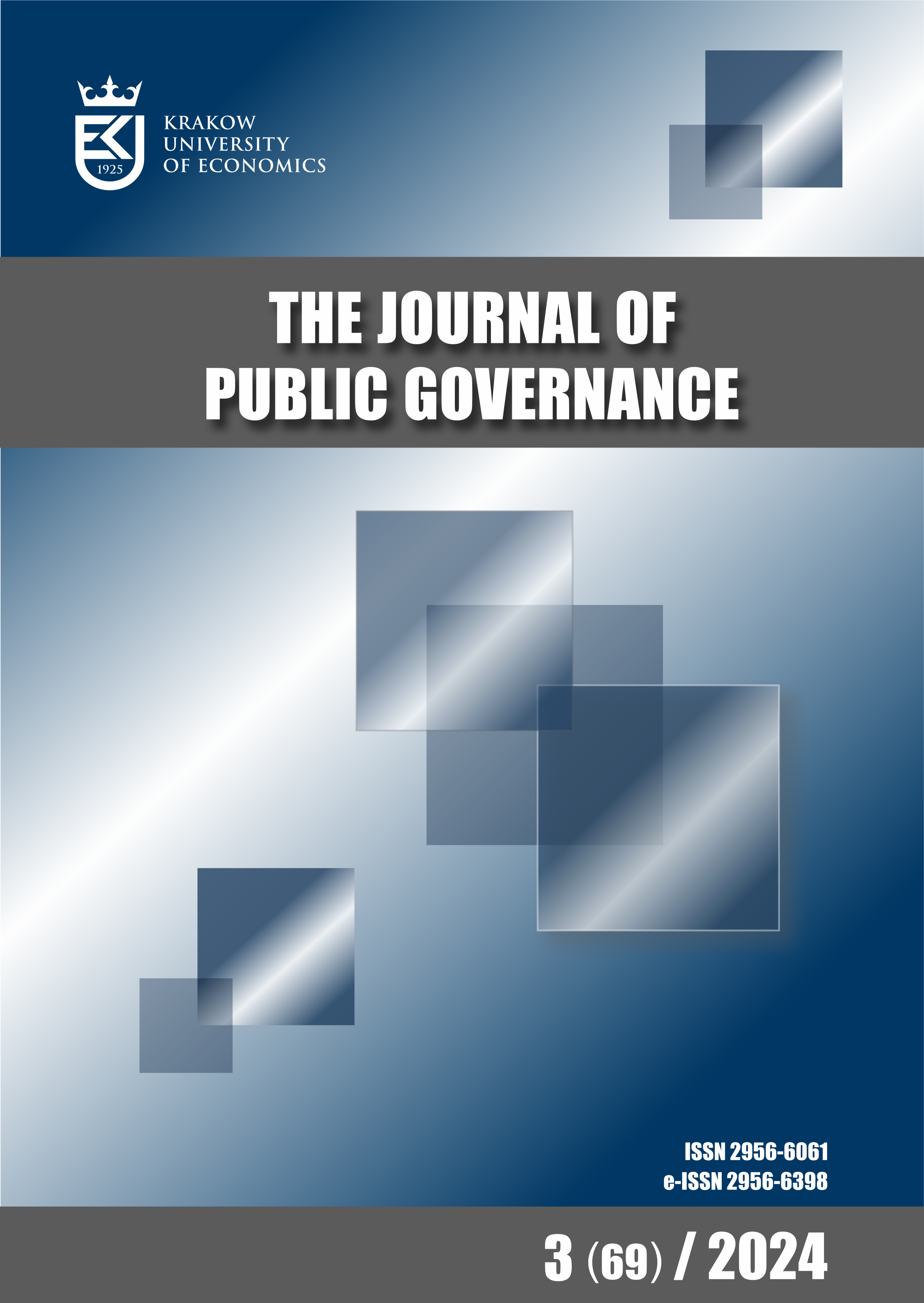Investing in Shares of CSR Companies as an Instrument of Investment Risk Management
DOI:
https://doi.org/10.15678/PG.2024.69.3.03Keywords:
Corporate Social Responsibility, investment risk management, risk measureAbstract
Objective: Corporate Social Responsibility (CSR) is a concept of running a company that is more and more implemented among companies around the world. Not only companies are more and more interested in CSR, but also the financial community. The objective of this study is to research the influence of CSR on the investment risk level among companies whose shares are listed on the Warsaw Stock Exchange.
Research Design & Methods: In this study, an analysis and assessment of literature was used as well as empirical research whose scope covers the period of 2009–2017. In empirical research for investments in shares of companies included in the RESPECT Index there were estimated risk measures and their levels were compared with levels of those risk measures for investment in WIG.
Findings: Companies from the RESPECT Index were characterised by higher total risk and lower systematic risk. Moreover, the results of skewness and kurtosis were mixed.
Implications / Recommendations: The practical implication of this study is showing companies whose shares are listed on the Warsaw Stock Exchange and which implemented CSR. Moreover, mixed results of this study demonstrate that investing in shares of CSR companies is a complex issue, because the results depend on the kind of risk that is analysed. This is important knowledge in investment risk management. Information about companies that implemented CSR and about the risk level of those companies is important to investors who want to invest in CSR companies as well as to the managers of companies, because the influence of CSR on the investment risk level is indicated.
Contribution / Value Added: Investing in CSR companies is a complex issue and its results depend on risk measure. The added value of this study is to compare risk levels for investment in shares of companies included in the RESPECT Index with risk levels for investment in WIG. Moreover, this study contributes to a better understanding of the consequences of implementing CSR in a company as well as better understanding of a company’s attractiveness for investors.
Article classification: research article
JEL classification: G32, M14
Downloads
References
Bouslah, K., Kryzanowski, L., & M’Zali, B. (2018). Social Performance and Firm Risk: Impact of the Financial Crisis. Journal of Business Ethics, 149, 643–669. https://doi.org/10.1007/s10551-016-3017-x
Breuer, W., Müller, T., Rosenbach, D., & Salzmann, A. (2018). Corporate social responsibility, investor protection, and cost of equity: A cross-country comparison. Journal of Banking and Finance, 96, 34–55. https://doi.org/10.1016/j.jbankfin.2018.07.018
Cardillo, G., Bendinelli, E., & Torluccio, G. (2023). COVID-19, ESG investing, and the resilience of more sustainable stocks: Evidence from European firms. Business Strategy and the Environment, 32(1), 602–623. https://doi.org/10.1002/bse.3163
Carroll, A. B. (1979). A Three-Dimensional Conceptual Model of Corporate Performance. Academy of Management Review, 4(4), 497–505.
Carroll, A. B. (1991). The Pyramid of Corporate Social Responsibility: Toward the Moral Management of Organizational Stakeholders. Business Horizons, 34(4), 39–48.
Djoutsa Wamba, L., Sahut, J-M., Braune, E., & Teulon, F. (2020). Does the optimization of a company’s environmental performance reduce its systematic risk? New evidence from European listed companies. Corporate Social Responsibility and Environmental Management, 27(4), 1677–1694. https://doi.org/10.1002/csr.1916
Hull, J. C. (2015). Risk Management and Financial Institutions. John Wiley & Sons.
Jiraporn, P., Jiraporn, N., Boeprasert, A., & Chang, K. (2014). Does Corporate Social Responsibility (CSR) Improve Credit Ratings? Evidence from Geographic Identification. Financial Management, 43(3), 505–531.
Kim, Y., Li, H., & Li, S. (2014). Corporate social responsibility and stock price crash risk. Journal of Banking & Finance, 43, 1–13. http://dx.doi.org/10.1016/j.jbankfin.2014.02.013.
Luo, X., & Bhattacharya, C. B. (2009). The Debate over Doing Good: Corporate Social Performance, Strategic Marketing Levers, and Firm-Idiosyncratic Risk. Journal of Marketing, 73(6), 198–213.
Meira, E., Cunha, F. A. F. de S., Orsato, R. J., Miralles-Quirós, M. M., & Miralles-Quirós, J. L. (2023). The added value and differentiation among ESG investment strategies in stock markets. Business Strategy and the Environment, 32(4), 1816–1834. https://doi.org/10.1002/bse.3221
Oikonomou, I., Brooks, C., & Pavelin, S. (2012). The Impact of Corporate Social Performance on Financial Risk and Utility: A Longitudinal Analysis. Financial Management, 41(2), 483–515. https://doi.org/10.1111/j.1755-053X.2012.01190.x
Rehman, Zu., Khan, A., & Rahman, A. (2020). Corporate social responsibility’s influence on firm risk and firm performance: the mediating role of firm reputation. Corporate Social Responsibility and Environmental Management, 27(6), 2991–3005. https://doi.org/10.1002/csr.2018
Useche, A. J., Martínez-Ferrero, J., & Alayón-Gonzales, J. L. (2024). Socially responsible portfolios, environmental, social, corporate governance (ESG) efficient frontiers, and psychic dividends. Corporate Social Responsibility and Environmental Management, 31(2), 1323–1339. https://doi.org/10.1002/csr.2635
Vernimmen, P., Quiry, P., Dallocchio, M., Le Fur, Y., & Salvi, A. (2009). Corporate Finance: Theory and Practice. John Wiley & Sons.
Downloads
Published
Issue
Section
License
Copyright (c) 2024 Krakow University of Economic

This work is licensed under a Creative Commons Attribution 4.0 International License.



